Are you curious about Blue (Gray) British Shorthair cats and wondering if they’re the perfect fit for your home? These adorable felines, with their plush coats and stunning eyes, have a gentle yet loving personality that’s hard to ignore.
In this guide, we’ll explore their history, traits, and care tips. Keep reading—there’s so much to discover!
Key Takeaways
- Blue British Shorthair cats have a dense, plush coat and round eyes. They are calm, loyal companions who bond strongly with their families.
- The breed gained fame in 1871 at the Crystal Palace Cat Show and was officially recognized by the CFA in 1980.
- They are prone to health issues like hypertrophic cardiomyopathy (HCM) and polycystic kidney disease (PKD). Regular vet check-ups are vital.
- Grooming is easy due to their short fur, but it increases during shedding seasons in spring and fall. Brushing weekly helps maintain their coat’s health.
- A balanced diet prevents obesity, while avoiding toxic foods like chocolate, onions, grapes, or dairy keeps them safe.

History and Origins of Blue (Gray) British Shorthair Cats

These cats started as British street cats. They were strong, skilled hunters with short, thick fur to survive harsh weather. Over time, breeders mixed them with Persians and Russian Blues.
This gave the British Shorthairs their plush coat and iconic round features.
I find it so fascinating that in 1980, these beauties finally earned official recognition by the Cat Fanciers Association!
Appearance and Physical Characteristics
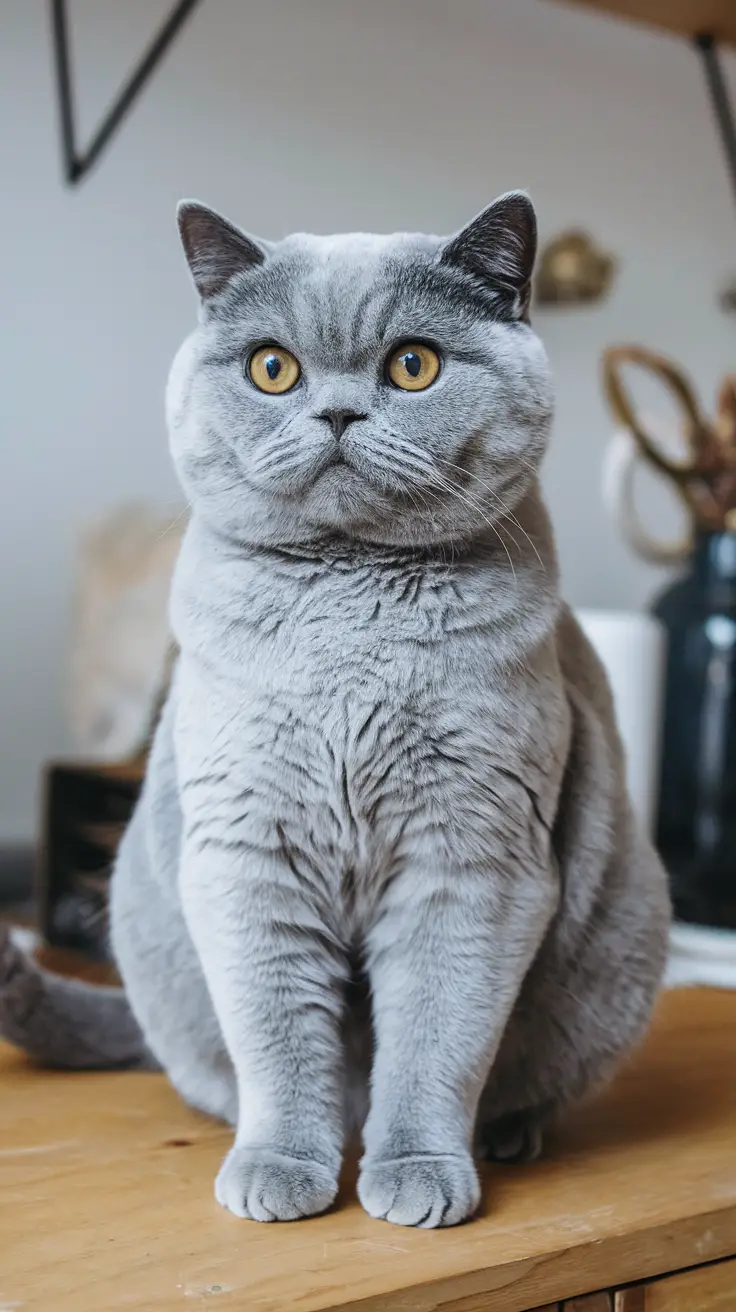
These cats look like they stepped out of a storybook, with their plush coat and striking eyes. Their strong build gives them an elegant yet cuddly charm.
Coat color and texture

Blue British Shorthair cats have a dense, plush coat. It feels soft yet crisp, almost like velvet under your fingers. The “blue” coloring looks more gray to me, but it’s stunning—uniform and solid throughout their body.
Their fur doesn’t have an undercoat, so it breaks or parts slightly as they move. While blue is the classic color, they now come in black, cream, silver, golden shades, and even tabby patterns.
I find their unique texture makes grooming feel effortless since loose hair tends not to mat badly.
Eye color and structure
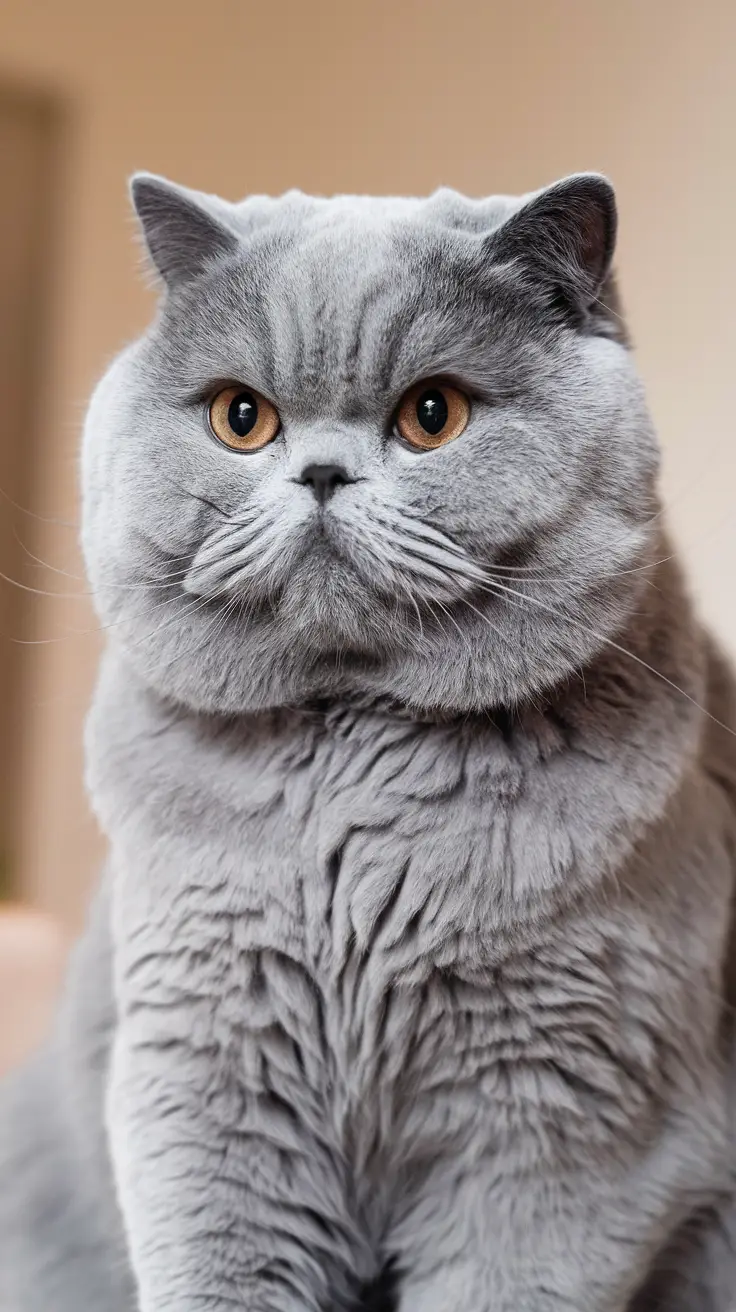
Their eyes are large, round, and expressive. I’ve noticed they can have blue, gold, copper, green, hazel, or even odd-colored eyes. Copper seems to stand out the most against their plush gray coat.
The structure of their face makes their round eyes pop more. A firm chin and full cheeks give them a signature “smiling” look—like the Cheshire Cat in *Alice in Wonderland*. Their gaze feels both mysterious and warm at once.
Personality and Temperament

These cats are calm but not lazy. They can be playful when the mood strikes, making them great companions for all ages.
Affectionate and loyal nature
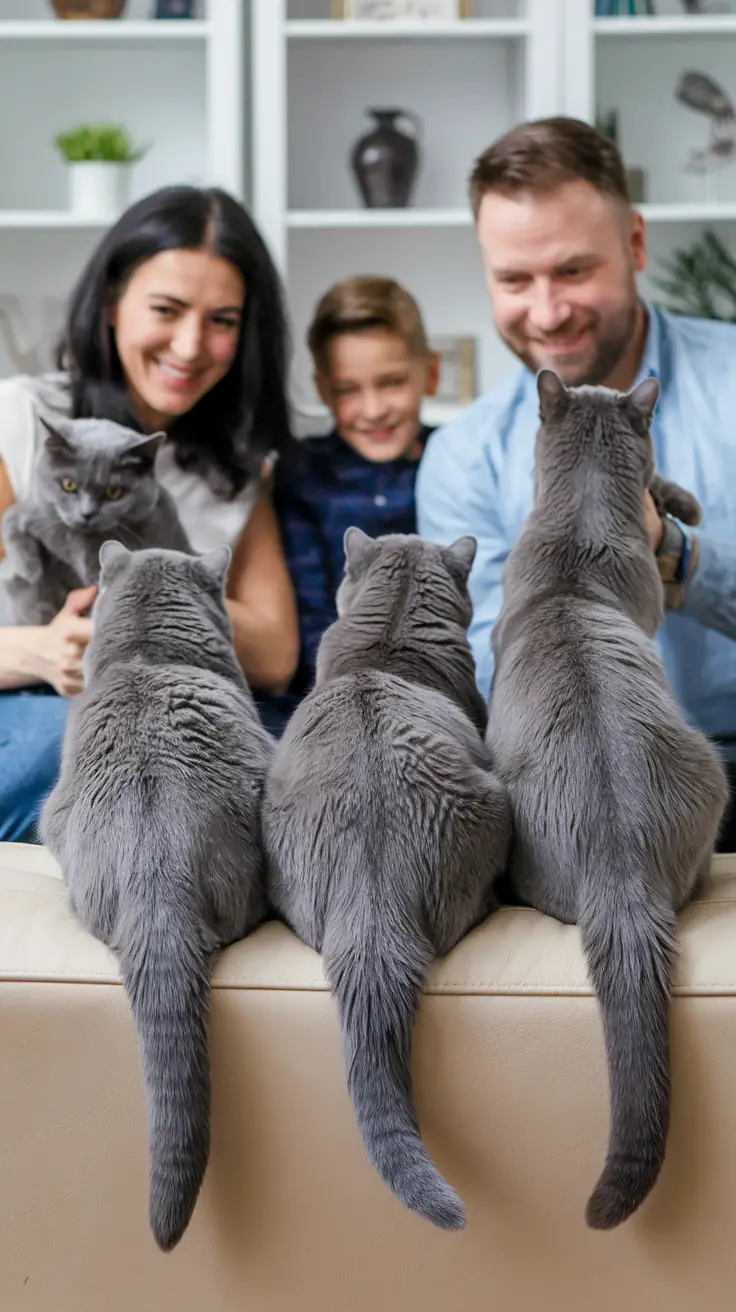
Blue British Shorthairs have a calm, loving personality. They’re affectionate but don’t smother you with constant attention. I’ve noticed they enjoy sitting near me rather than always being on my lap.
Their loyalty is second to none. This breed often forms strong bonds with its family. While they aren’t loud or demanding, their quiet companionship speaks volumes. Their intelligence shines in how quickly they understand routines and household rules.
Behavior with families and other pets steps in naturally after this trait!
Behavior with families and other pets
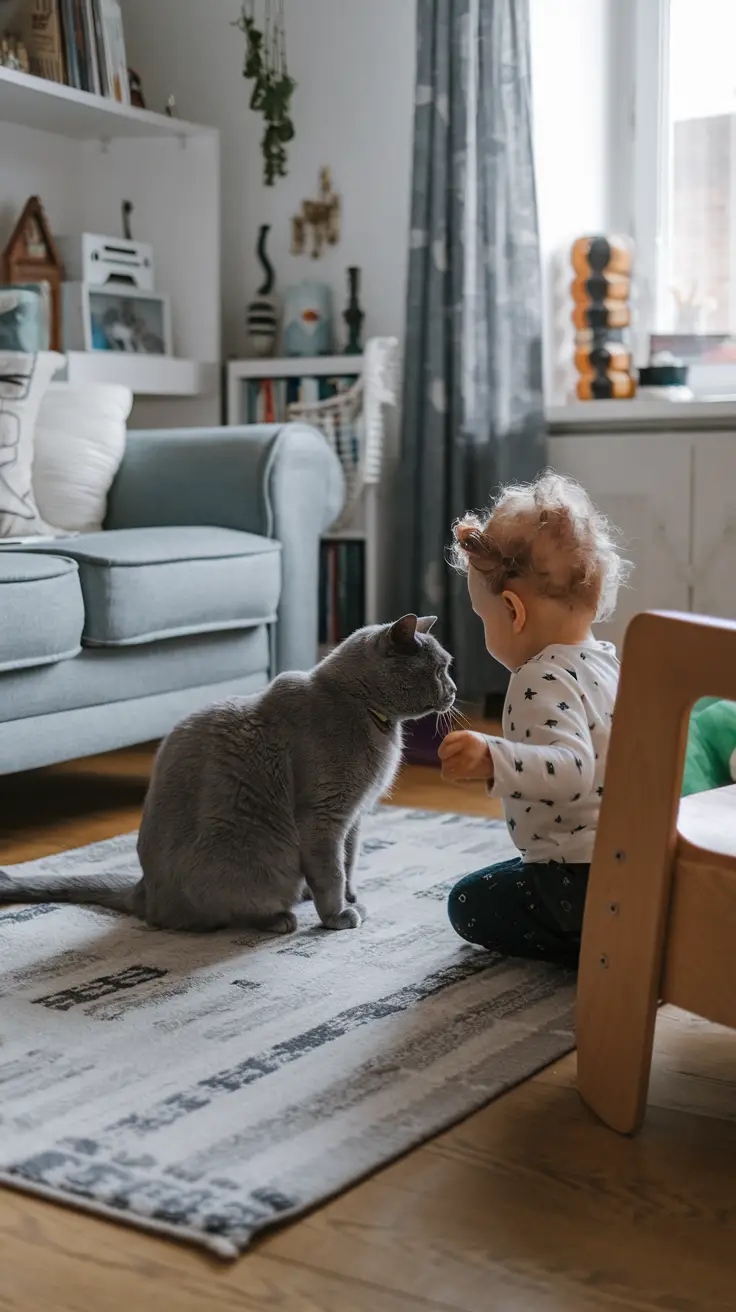
I’ve noticed British Shorthairs, especially the blue ones, are calm and gentle. They love spending time with families. Kids can play with them without worry since they don’t scratch or bite easily.
Their loyalty shows in small ways—like following me from room to room.
These cats get along well with other pets too. My friend has one living happily with a dog and another cat. They’re not aggressive but need introductions done slowly. Long absences can make them lonely, so I always leave toys like toy mice or use cat trees to keep them busy while I'm out.
Care and Grooming Needs

Their thick, plush coat needs regular attention to stay healthy and smooth. During shedding seasons, extra brushing can save your furniture—and your sanity!
Grooming routines for their dense fur
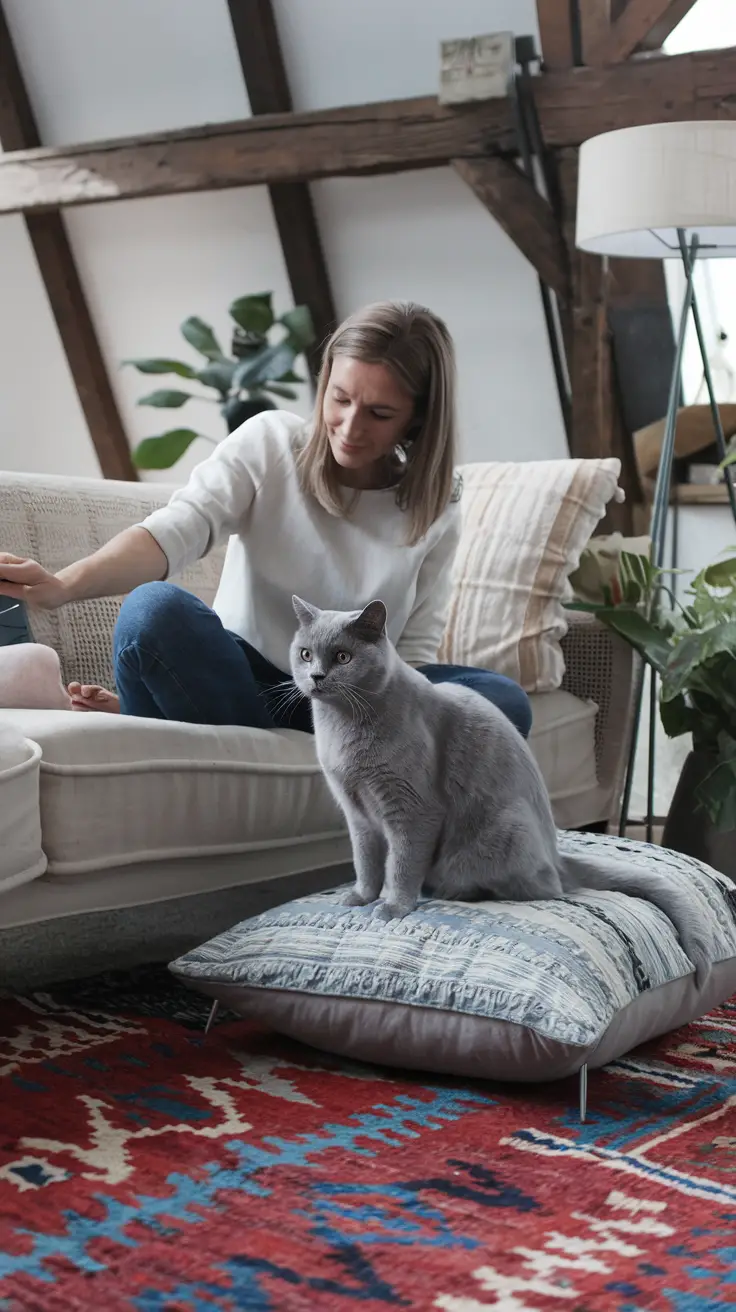
Blue British Shorthair cats have a plush coat that needs regular care. Their dense fur calls for proper grooming to stay healthy and shiny.
- I brush my cat’s fur once a week using a soft-bristle brush. This keeps it smooth and removes loose hair.
- During shedding seasons, I increase brushing to two or three times weekly. It helps manage extra shedding and avoids hair buildup.
- I check the fur for any tangles or mats, even though their coat isn’t woolly. A quick comb-through solves tiny knots before they get worse.
- Using gentle strokes while brushing makes grooming stress-free for both me and my cat. It’s essential to be patient during this time.
- I wipe my cat’s coat with a damp cloth occasionally to remove dirt or dust, especially if they’ve been exploring more than usual.
- Regularly inspecting the skin under the fur is important too. I watch out for irritation, dryness, or redness during grooming sessions.
- My cat enjoys toy mice and climbing on cat trees, which sometimes leads to fur collecting debris. Cleaning these spots ensures no hidden messes stick around!
- Grooming also lets me bond with my British Blue as they purr happily through the process—a win-win!
Seasonal shedding considerations
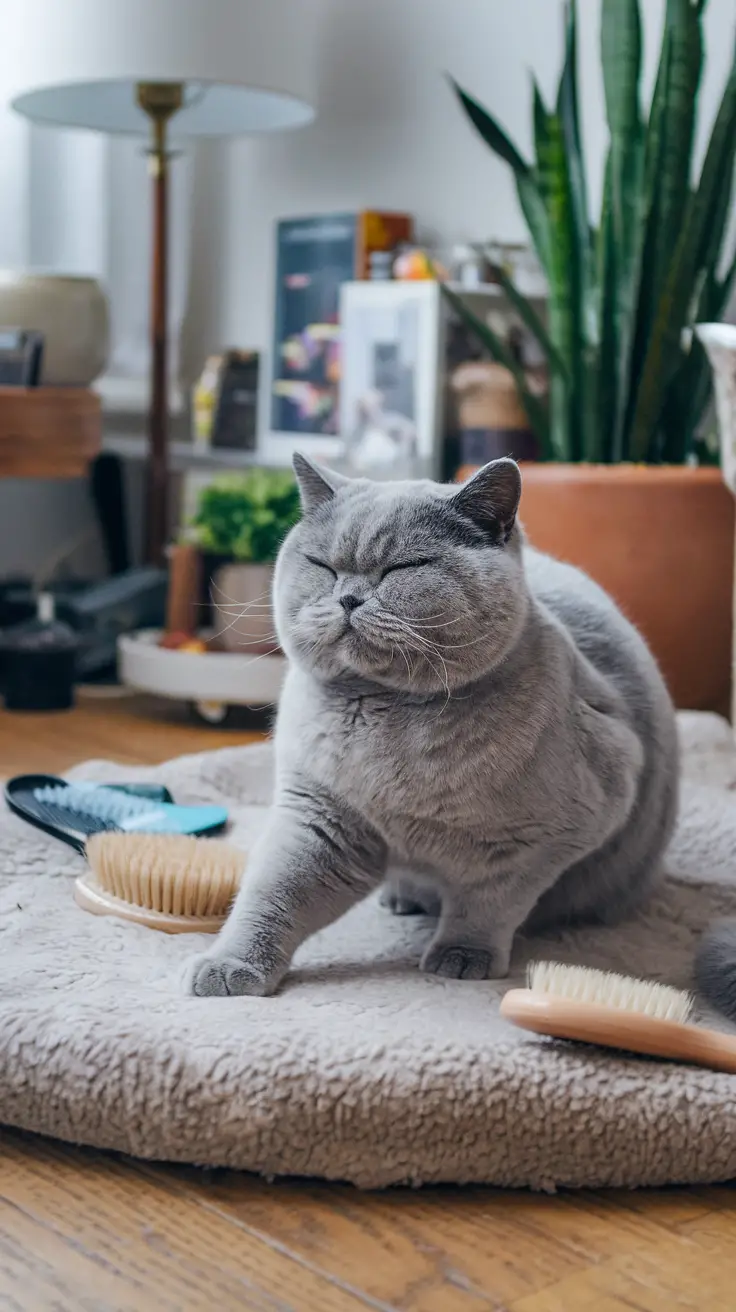
I notice their plush coat starts shedding more during spring and fall. Brushing daily helps manage the extra fur around my home. Their dense coat makes this important to keep loose hair under control.
Medium shedding is normal, but it can feel heavier in these seasons. I use a soft-bristle brush or grooming gloves for their comfort and to reach deeper layers of fur. Regular cleaning of areas like furniture and cat trees also reduces stray hairs floating around.
Nutrition and Feeding Recommendations

Feeding your cat the right food keeps them healthy and happy. Watch for quality ingredients, and don’t skip meals—they’ll remind you anyway!
Diet for optimal health

I feed my British Shorthair measured meals twice a day. Kittens need food more often, so I serve them three meals daily. This helps control their weight and keeps them healthy.
Overeating is a big problem with these cats. They can gain weight quickly if not monitored. I stick to high-quality wet food mixed with some dry kibble for balance. Treats are rare and kept small.
Next, let’s talk about foods they should never eat!
Foods to avoid

Some foods are harmful to blue (gray) British Shorthair cats. To keep them healthy, avoid feeding these items.
- Chocolate
It contains theobromine, which is toxic to cats. Even small amounts can harm their hearts or cause seizures. - Onions and Garlic
These damage red blood cells, leading to anemia. Cooked, raw, or powdered forms are all dangerous. - Bones
Cooked bones can splinter and cause choking or intestinal tears. They’re a big risk for any housecat. - Raw Eggs
They may carry salmonella and reduce biotin levels in your cat, causing skin issues. - Grapes and Raisins
Even tiny portions can trigger kidney failure in cats. - Dairy Products
Many cats are lactose intolerant. Milk or cheese could upset their stomachs. - Alcohol and Caffeine
Both are highly toxic to cats and can lead to serious problems like heart issues or death. - Dog Food
It doesn’t have the nutrients required for a cat’s diet and might cause deficiencies over time. - Fat Trimmings
Greasy scraps from meat can lead to pancreatitis in cats like my British Blue. - Xylitol-Sweetened Foods
Sugar-free gum or candy with xylitol lowers blood sugar dangerously fast in felines.
Feeding proper meals prevents health risks and weight gain while ensuring they stay active and happy!
Common Health Issues

Blue British Shorthairs may face a few health challenges as they age, so regular check-ups are a must. Watching for early signs of illness can make all the difference in keeping them happy and healthy.
Genetic predispositions
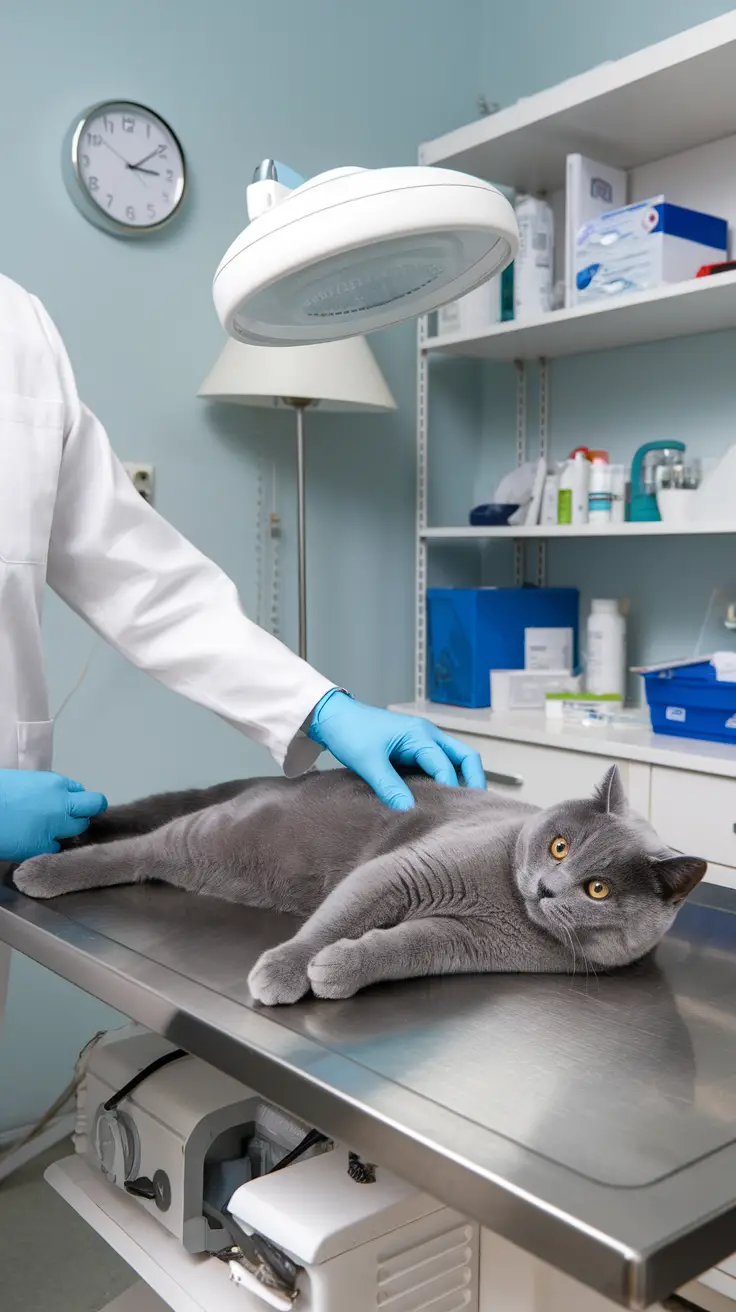
These cats can inherit certain health problems. They’re prone to hypertrophic cardiomyopathy (HCM). It’s a heart condition causing the walls of the heart to thicken. A Danish study found HCM is more common in males, with 20.4% affected, compared to only 2.1% in females.
Polycystic kidney disease (PKD) is another risk. It leads to cysts forming in their kidneys over time. Diabetes is rare but still possible, with British Shorthairs showing a prevalence of 0.24%.
Regular check-ups with a vet help spot these issues early and keep them healthy longer.
Preventative healthcare tips
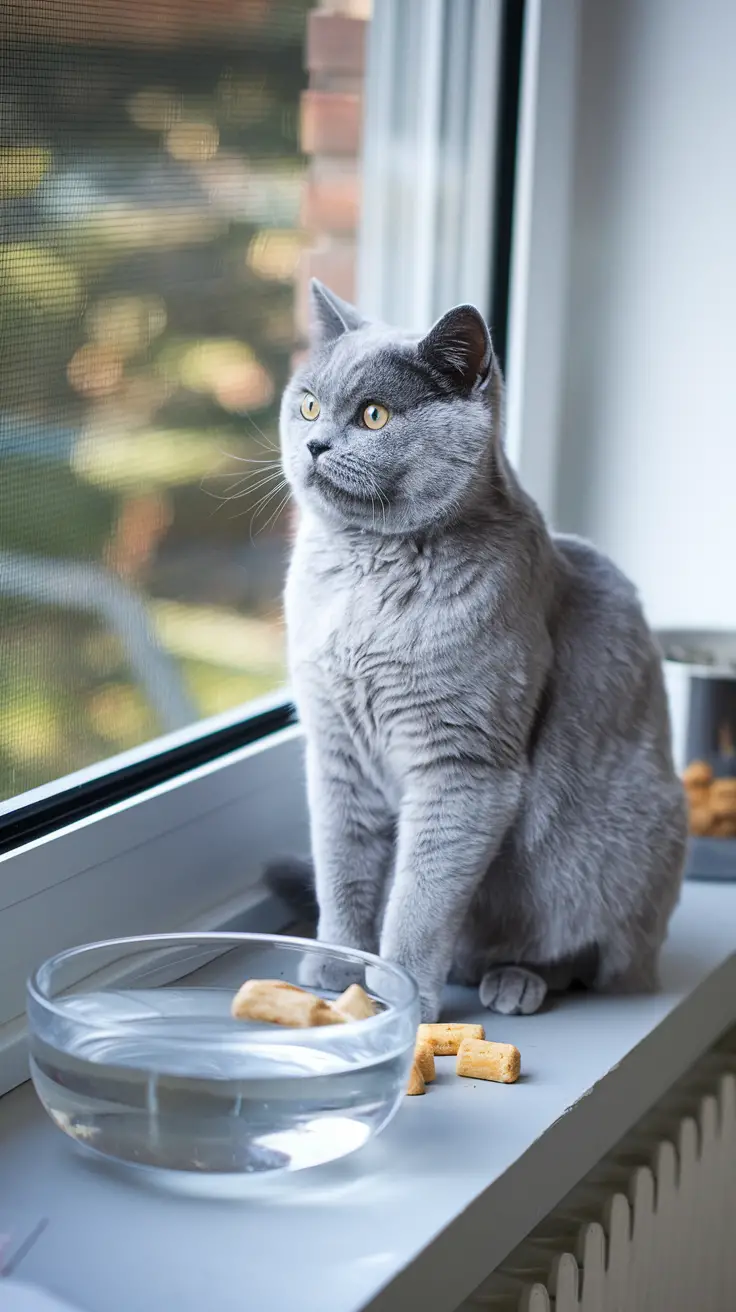
Taking care of a British Shorthair means keeping them healthy. Regular checkups and simple habits can prevent many issues.
- Visit the vet every year for a full health check-up. This helps catch problems like hypertrophic cardiomyopathy (HCM) early.
- Keep vaccinations up to date. Diseases like feline leukemia can be deadly without protection.
- Monitor their weight closely to avoid obesity and diabetes. A balanced diet with wet food helps maintain proper weight.
- Brush teeth weekly or use vet-approved dental treats to prevent gum disease and tooth decay.
- Check ears for any dirt or discharge that might lead to infections. Clean gently with products made for cats if needed.
- Pay attention to seasonal shedding by grooming their dense coat more often during these times.
- Look out for unusual behavior, such as hiding, limping, or loss of appetite, which may signal illness.
- Use flea and tick prevention all year round since parasites can cause irritations or more serious diseases.
- Keep fresh water available at all times to support kidney health and proper hydration.
- Schedule blood work after the age of 7 to detect early signs of kidney or liver issues in aging cats.
Each small step leads to a healthier and happier companion!
Fun Facts About Blue British Shorthairs
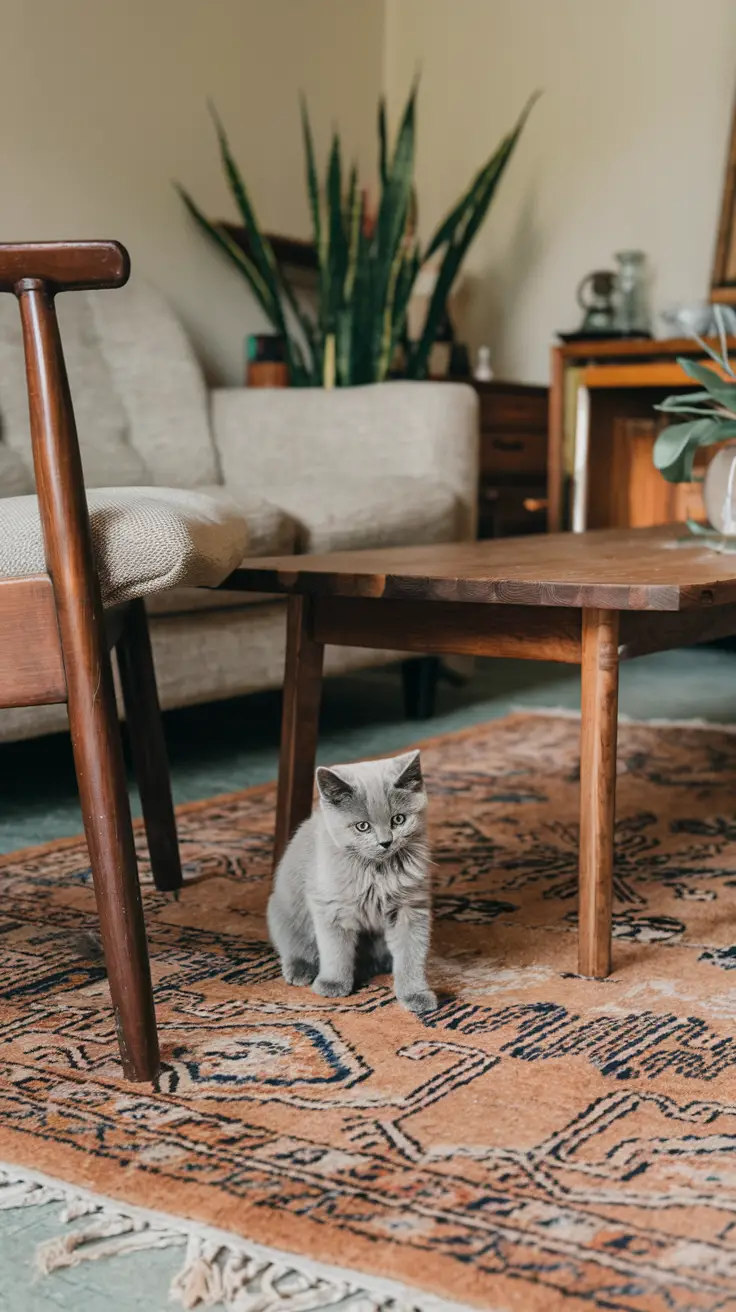
Blue British Shorthairs are among the most popular pedigree cats in the UK. Around 25% of all kittens registered annually with the GCCF belong to this breed! Their iconic look even inspired the Cheshire Cat in *Alice in Wonderland*.
Thanks to Harrison Weir's efforts, these cats first appeared at the Crystal Palace Cat Show in 1871. By the late 1970s, the breed had officially received recognition from CFA and TICA.
Despite their fame as “British Blues,” they’re not always blue-gray; bicolor patterns exist, too! Plus, their plush coat makes them stand out from other housecats like Siamese or Turkish Angoras.
Conclusion
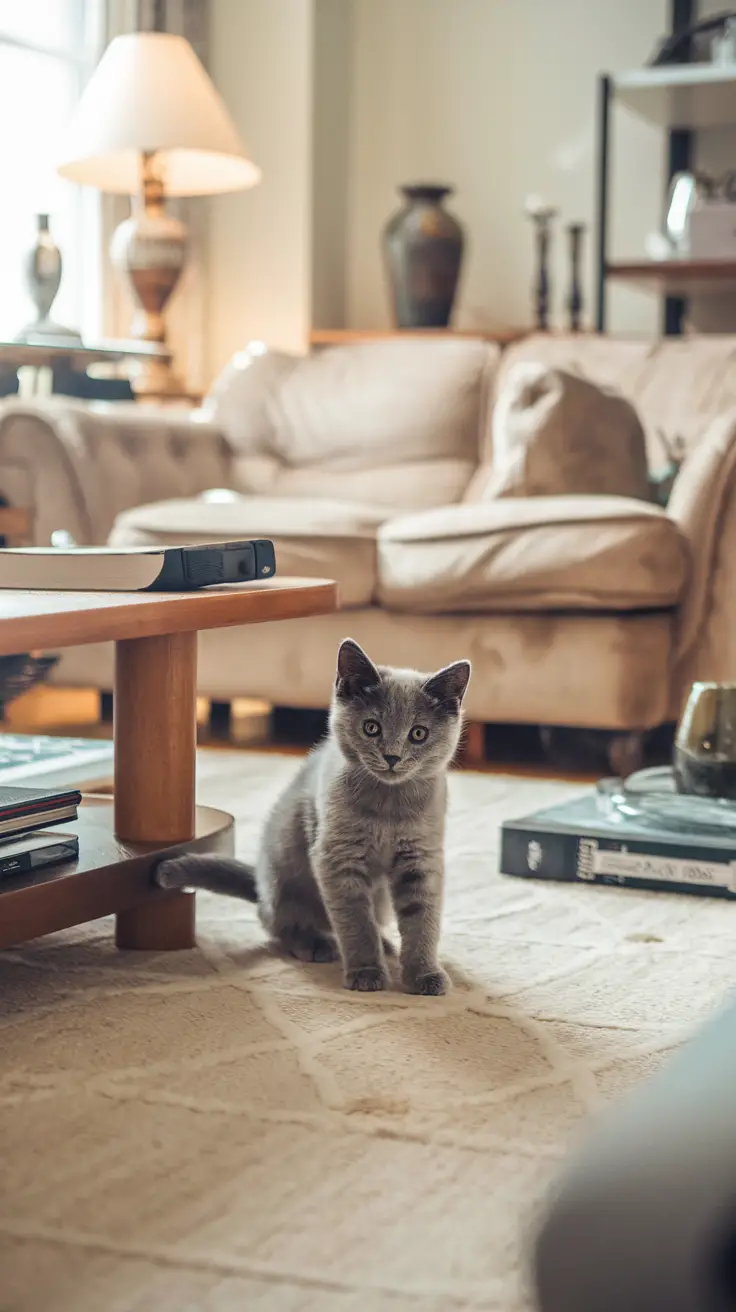
Owning a British Shorthair feels like having a fluffy companion who’s always ready to brighten your day. Their plush coat, copper eyes, and teddy bear-like charm make them hard to resist.
They’re affectionate but not overly needy—a perfect mix of calm and playful. With the right care, they’ll be healthy and happy for years. Life with one of these cats is nothing short of delightful!
This website contains affiliate links. As an Amazon Associate and an affiliate for other programs, I earn from qualifying purchases. Clicking on an affiliate link may result in a commission being paid to me at no additional cost to you.

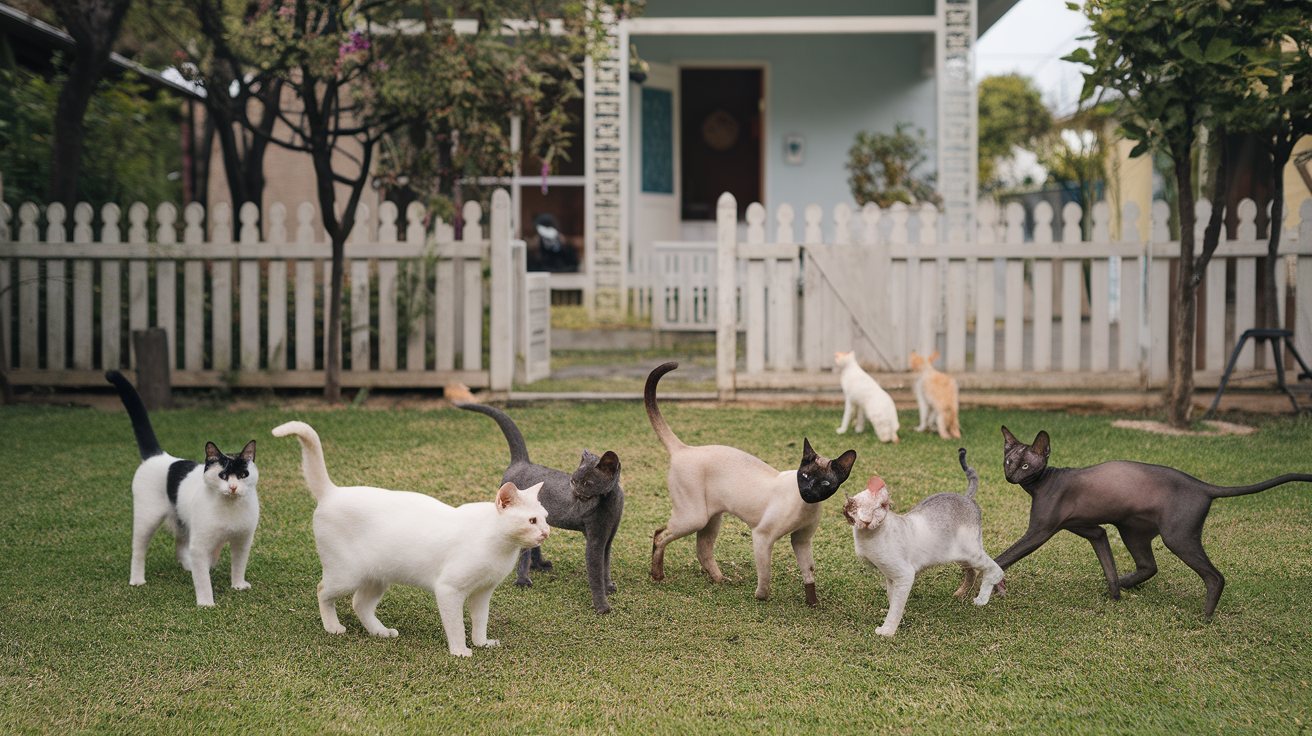

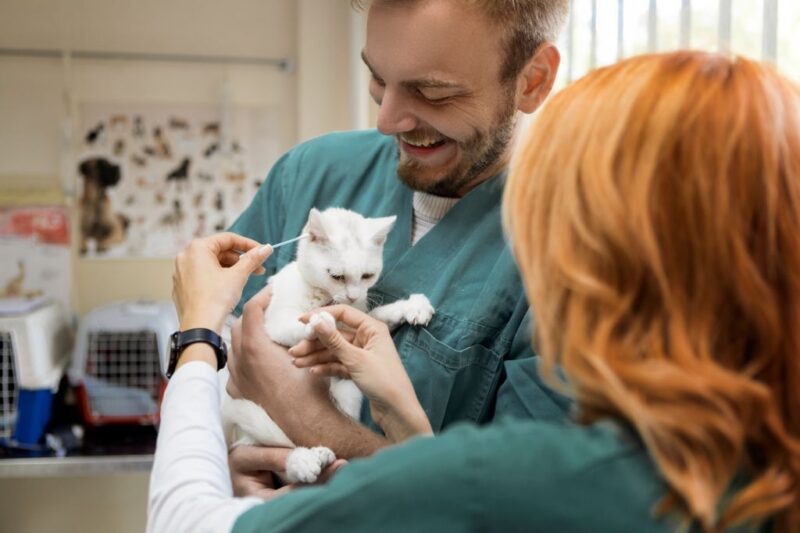


Leave a Reply